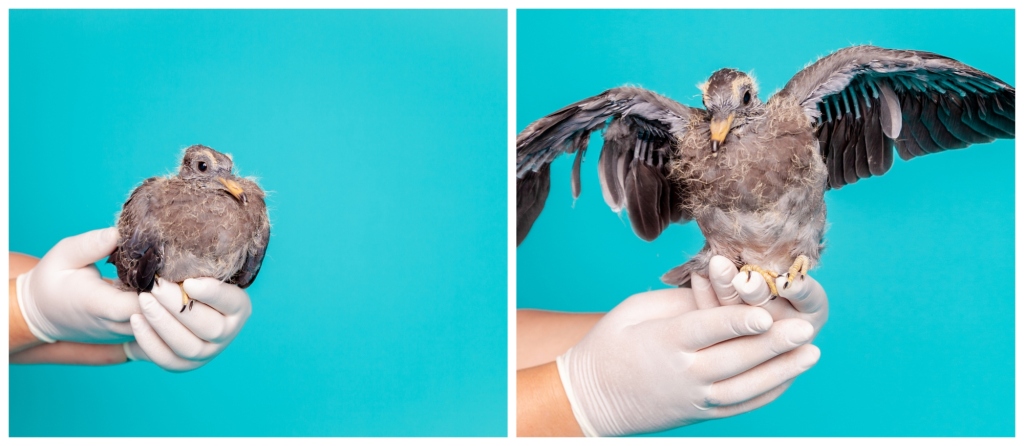This spring, Pasadena Humane’s Wildlife Helpline has heard from many concerned callers who think they’ve found an injured or abandoned bird. Luckily, in most cases, the bird in question is not hurt or orphaned. It’s a fledgling.
I think of fledglings as being comparable to human adolescents. They’ve started to wander away from the nest on their journey to adulthood, but they are not yet able to fly on their own.
Fledglings will spend about two weeks on the ground walking, hopping and fluttering as they develop their flight muscles. These awkward movements are normal for fledglings, and their parents are usually nearby to feed and care for them.
Hatchlings and nestlings are a different story. Think of hatchlings as newborns and nestlings as children. These little birdies are too young to be out of the nest.
If you suspect a bird is injured or orphaned, identifying the bird’s stage in life is paramount in determining the appropriate intervention.
It’s easy to spot hatchlings. Just a few days old, their eyes are still closed. Nestlings’ eyes have opened, but they aren’t flaunting their feathers yet. Fledglings can be distinguished from these younger birds by their feathers and ability to move around on the ground.
Fledglings have many features that help you distinguish them from full-grown adults. A fledgling’s wing and tail feathers are shorter. Also, fledglings may have a different eye color. For example, crow and raven fledglings have blue eyes.
Fledglings have what I think is an ingenious evolutionary trait. The bright color of a fledgling’s beak or bill (usually yellow or pink around the edges) acts as a bullseye to ensure their parents are delivering food to the right place.
The best thing to do if you see a healthy fledgling on the ground is leave it alone. But, a truly sick or orphaned fledgling needs your help.
If you are not sure if the bird is a fledgling or whether or not it is healthy, take a clear photo and contact…
Read the full article here







